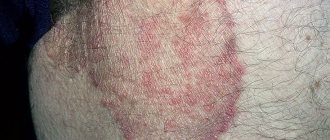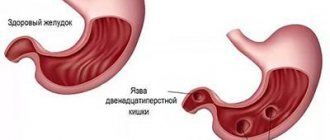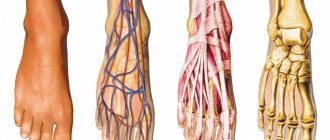Smallpox
The cessation of vaccination against smallpox could provoke an increase in HIV infections . According to immunologists, the smallpox vaccine reduced the likelihood of the immunodeficiency virus entering cells. The authors of the study, American scientists from the University of California and several other research centers, described in the pages of the journal the results of experiments on cell cultures taken from people who had been vaccinated. The researchers found that in cells from people previously vaccinated against smallpox, HIV multiplied more slowly than in the same cells from people who had not been vaccinated.
Caution won't hurt, however . One should not, however, assume that the smallpox vaccine protects against HIV and immediately run to get vaccinated: scientists emphasize that the experiment was carried out on a cell culture, and not on a whole organism, and a five-fold reduction in the rate of spread of the virus was not obtained for every variety HIV, but only for certain strains. These strains are quite common and play an important role in the development of the epidemic, but they are far from the only ones. And slowing down the spread of the virus by five times is still not equivalent to its complete destruction.
Another thing is that until the 1970s, when smallpox vaccinations were administered en masse, the risk of infection could be less, and for a long time the virus simply could not spread beyond a limited area in Central Africa. Even now, the probability of HIV transmission through sexual contact does not exceed tenths of a percent, and a decrease in this value by several times, coupled with poor development of transport, could well prevent the pandemic from spreading. Now that the number of carriers of the virus is about 40 million people worldwide, there is no hope of eradicating HIV, even if the results of preliminary experiments are fully confirmed. But any promising approach to reducing the risk of transmission of the virus is certainly worth considering.
How it works? A key role in the potential protective mechanism is played by receptors such as CCR5 - protein molecules located inside the cell membrane. It is these molecules that HIV interacts with when entering a cell, and virologists know that people with a mutant form of CCR5 receptors for HIV are much less vulnerable.
Windows and doors
CCR5 is not the only molecule that the virus uses to enter cells. Equally important are the CD4 receptors. Using an analogy, we can compare receptors to the “windows” and “doors” of a cell. Burglars enter through both doors and windows, so installing safety glass or secure locks separately only reduces, but does not eliminate, the risk of theft.
By the way, the analogy between receptors and windows is also noteworthy in that the cell itself needs receptors for selective interaction with other cells.
The vaccinia virus, which is the basis of the vaccine (the similarity in the names is not accidental; the virus is named precisely for its noble function) against smallpox, can change the expression of the CCR5 gene. This means that the gene responsible for the synthesis of receptor proteins can be “turned off,” and over time, the CCR5 receptors simply disappear in a vaccinated patient.
How exactly this happens, how long the effect lasts (scientists conducted experiments on cells from people vaccinated three and six months before the experiment) and whether it can also be enhanced is still unclear. But what is clear is that smallpox vaccinations are safe enough for mass use: they were given to every child on the planet at one time, and many were left with a tiny scar on their shoulder.
Only in the 1980s, when smallpox disappeared from the face of the Earth and remained only in a few microbiological laboratories, vaccinations were abandoned, since the risk of side effects began to many times exceed the risk of contracting smallpox itself. But if it is proven that smallpox vaccinations also help against HIV (even if not absolutely), it will not be difficult to return to smallpox vaccination.
Pathogenic and anthroponotic
The kingdom of viruses was discovered more than a hundred years ago by the outstanding Russian scientist D.I. Ivanovsky, but it was possible to study these tiny organisms only in recent decades thanks to the rapid development of instrumental research methods.
Although viruses are very diverse in their organization and functioning, all of them are able to reproduce only in the cells of other organisms, unicellular and multicellular. In the process of long-term co-evolution with the host organism, viruses constantly “try” new options for suppressing the host’s defensive reactions or “deceiving” them through molecular mimicry. In particular, viruses can include in their genome coding sequences of cellular genes involved in the regulation of immune reactions and modify them, adapting them to ensure their own vital functions.
Different mammalian viruses differ not only in the size of the genome and the viral particles themselves, but also in the strategy of their development in the host body. Viruses from different families demonstrate surprising diversity in their mechanisms for overcoming the innate and adaptive immune systems of mammals. Therefore, the study of these features of viruses makes it possible to identify new patterns in the organization and functioning of the protective systems of animals and humans, ensuring recovery after infection with a pathogenic agent.
Most viruses are capable of infecting a wide range of animal species ( host range
).
However, for medical biotechnology, highly pathogenic and at the same time anthroponotic
viruses, for which humans are the only host, are of particular interest. In this case, the virus can very effectively suppress (or “evade” the attack) the immune responses of the human body. Genotypic studies of such viruses and the identification of viral proteins that effectively suppress the development of inflammatory processes in response to infection create the prerequisites for the creation of new drugs intended for the treatment of chronic inflammatory diseases of a non-infectious nature.
An amazing example of high pathogenicity for humans and strict anthroponosity is the variola virus.
.
This virus, presumably, originally had a wide range of hosts, but during the process of evolution it lost the ability to reproduce in the body of other mammals, remaining in an endemic
(i.e., characteristic only of a given area) state for many centuries in densely populated areas, primarily the Indian subcontinent (Shchelkunov, 2012).
Poxviruses, to which variola virus belongs, are the largest mammalian DNA viruses. Viral proteins with immunomodulatory activity are synthesized in the early stages of viral infection. They remain in the infected cell or leave it, interacting with key proteins that regulate both the innate and adaptive immunity of the host. By suppressing the activity of these proteins, the virus provides the infected cell with “all-round defense” from attacks by the host’s immune system. A fibroblast cell culture cell from healthy human lung tissue infected with variola virus (strain India-1967). Electron microscopy. Photo by E. Ryabchikova
At the same time, the smallpox virus is not capable of remaining in the human body in a latent state or causing a chronic infection - the disease always ends in either recovery or death of the infected person. This reduces the likelihood of the virus surviving in nature and indicates that it has reached a kind of evolutionary “dead end”; on the other hand, multiplying from generation to generation only in the human body, the variola virus has maximally adapted at the molecular level to overcome the multi-tiered mechanisms of human innate and adaptive immunity (Shchelkunov, 2011).
Such properties of the particularly dangerous variola virus suggested that its proteins can be used for the treatment of various human immunopathologies (Shchelkunov, 1995). And today, at the State Research Center of Virology and Biotechnology “Vector” (Koltsovo, Novosibirsk region), work is underway on the creation of a new generation of drugs based on proteins secreted by poxviruses, to which the variola virus belongs.
Employees of the State Research Center of Virology and Biotechnology “Vector” (Koltsovo, Novosibirsk region) were the first in the world to decipher the structures of the genomes of human-pathogenic variola, cowpox and monkeypox viruses isolated from sick people (Shchelkunov et al., 1993, 1998, 2001) . A comparison of the genomic strategies of these viruses and genes encoding immunomodulator proteins showed that all viruses belonging to the poxvirus family ( Poxviridae
) are characterized by the greatest diversity of mechanisms for overcoming the protective immune reactions of the human body compared to viruses of other families (Shchelkunov, 2012). Variola virus, for which humans are the only host, is more effective than other poxviruses in suppressing the activity of the human immune system.
Pathological changes
Photo of smallpox virus
Skin changes
On the skin of corpses who died from smallpox, there is a rash in varying degrees of maturity. Macroscopically, in the initial period, with the papular nature of the rash, inflammatory phenomena are detected in the papillary and subpapillary layers of the skin and swelling of the epidermis, and then, with the development of a macroscopically visible vesicle, serous exudate leaks into the thickness of the epithelium and the formation of cracks in the epidermis; due to significant inflammatory exudation in them, part of the partitions between them breaks through (the cellular structure of the developed pockmarks). At the edge of the necrotic lesion, a strong proliferation of epithelial cells occurs, surrounding the central necrotic lesion in the form of a roller and leading to the formation of a central depression (smallpox umbilical). Subsequently, suppuration and destruction of the affected area of the skin occurs and then gradual healing with the formation of a scar due to connective tissue proliferation of the destroyed corium or without the formation of a scar in the form of temporary pigmentation (with suppuration of only the epidermis).
Changes in mucous membranes
Rashes are also observed on the mucous membranes of the mouth, pharynx, esophagus, vagina, and colon. When a rash occurs on the mucous membranes, due to the absence of a dense layer of epithelium, the contents of the vesicles quickly break through to the surface with the formation of ulcers. The formation of extensive ulcers and necrosis may be due to the addition of an additional third-party infection.
Changes in parenchymal organs
The spleen appears significantly enlarged due to plethora and hyperplasia of pulp cells. Degenerative phenomena are observed in parenchymal organs (heart, liver, kidneys). Testicular damage presents with a picture of acute necrotizing orchitis with temporary stromal edema and disintegration of the tubular epithelium. In the bone marrow, mainly in the epiphyses, areas of serous-fibrinous impregnation with necrotization of the formed elements are found.
Changes in hemorrhagic form
In hemorrhagic forms of smallpox, hemorrhages are observed in places of specific smallpox changes, as well as in various parts of the body (in the serous cavities, renal pelvis, bladder, uterus, ovaries, mediastinum, muscles, etc.).
How to properly care for a sick child?
This virus is very contagious , so first of all it is necessary to isolate the child from healthy brothers and sisters. During an exacerbation, do not walk. In this case it is necessary:
- constantly ventilate the room in which the child is located;
- try to distract the child from itching with games, reading books, etc.;
- dress the child in light clothes made of cotton and other natural fabrics to avoid the “greenhouse effect”;
- change bedding more often.
To reduce itching and relieve inflammation, you need to wash your child - give him a cool bath with herbal infusions. It is necessary to exclude hot, hard, spicy foods and foods that are potential allergens from the diet. If the child does not want to eat, offer him milk or tea with herbs. The diet should be light - pureed vegetables and fruits, soups, fermented milk products.
Symptoms
Smallpox: photo of a child
Incubation period
The incubation period for smallpox is estimated at 10-14 days. During this time, the disease does not manifest itself in any way, sometimes headache, pain in the sacrum and intestinal manifestations in the form of diarrhea are noted.
Prodromal period
The disease begins suddenly with stunning chills, increased heart rate (tachycardia), shortness of breath, headache and lower back pain, vomiting, and sometimes convulsions. The temperature rises to 39.5-40°. The spleen enlarges. After two days (less often already on the 1st day), a prodromal petechial rash appears on the torso with a characteristic location on the lower half of the abdomen and on the inner surface of the thighs (Simon's femoral triangle), as well as in the axillary areas. This form of prodromal rash is more common in severe cases. In addition to the petechial rash, erythematous scarlet-like and prodromal morbilliform rashes also occur on the 2nd day of smallpox. These rashes do not last long (from 12 to 36 hours) and disappear without a trace. Death due to symptoms of heart weakness can occur already in the prodromal period.
Rash period
Usually, by the end of 3 days, the temperature drops even to normal levels, and enanthema begins to appear on the mucous membranes of the throat and nose. Almost simultaneously, a rash in the form of pale pink papules appears on the skin of the forehead, nose, and upper lip. In the following hours, the papules spread to the trunk and limbs (the abdomen remains almost free of the rash), and their shape and appearance gradually undergo changes. They increase in size, turn red, turn into nodules with a sharp tip, then into pearl-colored bubbles (vesicula), surrounded by a narrow halo of redness, with transparent contents, and finally into a pea-sized pustule with an umbilical depression in the center. On the mucous membrane, some blisters lose their epithelium and turn into erosions that are painful. On the palms and soles, due to the thickness of the epidermal layer, pustules do not form, and only itchy papules form. The skin around the pustules swells. Subjectively, itching, burning and pain are felt at the sites of inflammatory edema. Subsequently, the contents of the pustules become cloudy, they burst, and the secretion protruding from them dries out and turns into a yellowish crust. Dried crusts gradually turn from yellow to brown and are little by little rejected, leaving star-shaped white durable scars.
Temperature curve for confluent smallpox (variola confluens)
The temperature, which dropped to 38° and below at the beginning of the rash, rises again at the onset of suppuration, followed by a gradual increase and with small morning remissions. Subsequently, the temperature also gradually decreases until recovery. The general condition during suppuration worsens significantly.
During this period, death most often occurs (sepsis, pneumonia, etc.).
How long does smallpox last?
The average duration of the disease is 4-6 weeks:
- the suppurative period begins on the 7-8th day,
- drying of pustules - from the 11th-12th day.
Diagnostics
Diagnosis of severe smallpox is not difficult.
Temperature curve for smallpox
The characteristic onset, course with a characteristic temperature curve and the rash itself make it possible to recognize smallpox. This cannot be said about abortive and erased forms.
Methods for diagnosing smallpox
To help in doubtful cases come:
- Paul's reaction
- Herzberger test,
- Paul and Hins test,
- Paschen's method.
Paul's reaction
The Paul reaction consists of drawing out the contents of the vial with a needle and syringe, placing it on a glass slide, allowing it to dry (without passing it through a flame), grinding it and diluting it with saline. The resulting suspension is injected into the rabbit's cornea. After 48 hours, the rabbit is killed, the eye is enucleated and placed in sublimate alcohol or Zenker's solution. After a few minutes, with a simple eye (preferably with a magnifying glass), you can see white dots and nodules on the cornea - smallpox elements, the authenticity of which is confirmed by the presence of Guarnieri bodies in them.
Herzberger test
According to Herzberger, the eye is not enucleated, but 2 days after rubbing the contents, 2 drops of 1% fluorescein are injected into the rabbit’s conjunctiva and rinsed with water after 20 seconds. The appearance of green dots in place of the rubbed material indicates its smallpox nature.
Paul and Hins test
The biological test of Paul and Gins consists in the fact that a guinea pig sensitized with a vaccine is injected intradermally with the contents of the pustule, diluted many times with saline. In the case of smallpox, an allergic reaction results in a clearly defined nodule. The Paul and Gins test is specific and very sensitive, but the possibility of its use is sharply limited by the need to have a previously sensitized animal or to specially prepare it for the test.
Paschen method
To study for Paschen bodies, material taken from pustules is stained using the Morozov method (silvering). To do this, an air-dried smear on a glass slide is immersed in distilled water for 3-5 minutes in a vertical position, after drying, it is exposed to Ruge's solution (1 ml of acetic acid, 2 ml of formaldehyde and 100 ml of distilled water) for 1 minute and then when heated until vapor appears, it is treated with a pickling solution (5 g of tannin and 100 ml of 1% carbolic solution). After thorough washing for 1-2 minutes, the preparation is exposed to an ammonia solution of silver, prepared ex tempore as follows: add 1 drop of 25% ammonia into a test tube with 20 ml of distilled water, and then add drops of 10% AgNO3 solution until a light, persistent turbidity forms. When examining the specimen under a microscope, the Paschen body is coal-black or resinous-black in color, the background is light brown.
Differential diagnosis
Smallpox must be differentiated from:
- chickenpox (the difference is the morphology of the vesicles themselves and anamnestic data),
- pustular syphilis,
- tuberculides (history and course),
- impetigo,
- exudative erythema (erythema exsudativum multiforme),
- scrofulosis (strophulus),
- acne (acne vulgaris),
- pustular rash in septic diseases,
- pustular form of scabies,
- vesicular form of erysipelas.
In the prodromal period, smallpox can be confused with many acute infectious diseases that begin acutely, with a sharp increase in temperature, severe general symptoms and failure syndromes of the nervous and cardiovascular systems. These forms include:
- cerebrospinal meningitis,
- purulent meningitis,
- scarlet fever (prodromal scarlet-like rash of smallpox),
- lobar pneumonia,
- acute gastritis,
- typhus and relapsing fever,
- measles (measles-like prodromal rash of smallpox and initial papular smallpox rash on the face).











